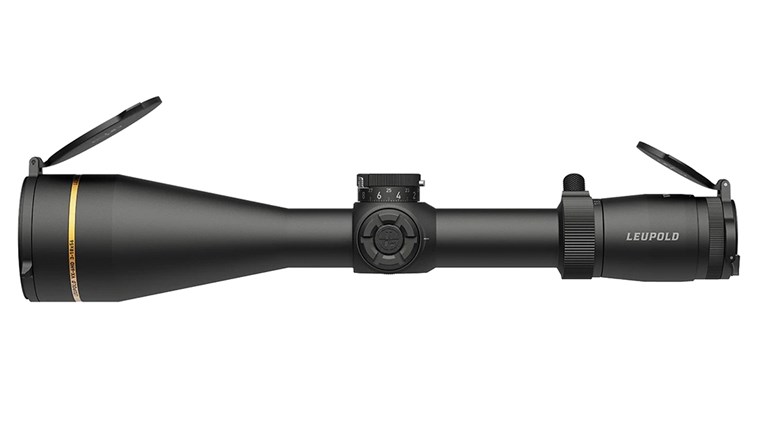
We’re suffering from (another) difficult bout of “drinking from a fire hose.” The proximate cause is three days of red-dot handgunning under the oh-so-watchful eye (and incredibly skilled hands) of Gabe Suarez.
As serial fans of Suarez International gear (here and here, for instance), we hope the name strikes a chord for A1F readers. But be that as it may, we’ve also long admired Suarez “doctrine” in the gunfighting realm, and particularly because it never seems to stand still. Based on real-world experience—getting shot at, and shooting back many times—in a varied law enforcement career and rigorous, continuing examination of what works against modern threats, Suarez (or his staff) have instructed quite literally all over the world for a sizeable chunk of two decades.

Ergo, we admit that shoehorning three such memorable days of red-dot and carry wisdom into a single Carry Life is beyond our powers. We’ll make a start, at the least, with the underlying premise of the course: Red dots are no longer an experiment or gimmick, and they’re making serious inroads as carry gun sighting solutions.
For starters, don’t confuse red dots with lasers. Red dots don’t “illuminate” or “designate” a target by actually throwing a small but intense dot of light onto it (which takes a comparative bunch of battery power, by the way). Instead, the dot you use to aim is a reflection of a small, efficient light source within the sight body. The apparent overlay of that dot on a possible target is courtesy of a curved lens and that angle of incidence business you may vaguely remember from high school physics: The light you see as target image travels through the glass to the eye at a high angle (straight, in fact), while the dot is reflected back to the eye.
The dot is strictly a shooter’s perspective, optical artifact, but with several advantages in terms of aiming. It need not be “centered” in the lens and then be placed over the target, nor must the eye focus on two visual planes. (If you’re a geezer or semi-geezer, this means use your distance prescription, but expect the delights of a clear target and a clear aiming cue.) In other words, because the relationship of the light source to the bore is constant where the reflection of the dot appears on the lens is immaterial as long as it is on your target. Sight alignment in the back-and-front, traditional sense is simply not necessary. The only way to miss is with sabotaging mechanics like poor trigger press.
There are other benefits as well. The light source itself does not have to compete with daylight in the same way a laser or even a flashlight would, so useful brightness is high. Unless you are sighting very nearly into the sun or other extremely intense illumination—which defeats nearly any aiming method, remember—you’re good to go. Bright light behind isn’t a problem either, as your head will de facto shade the view enough to keep the dot plain against a target and/or background.
Given such more-than-adequate brightness, battery life is a reasonable concern for the technology when applied to a carry or defensive gun. On the Trijicon RMR (“Ruggedized Miniature Reflex”) and Leupold DeltaPoint “Pro” models that Suarez recommends, however, battery life is either measured in years due to auto on/off technology, or altogether immaterial: We shot a Suarez International “Kompressor” slide and dual-illumination RMR through the first day of the class, and it uses either fiber optics (to gather available light) or tritium to power dot illumination. While dots' intensity often seems inadequate at first glance—and especially the amber ones—we have not found it so at all. The longer we use them, the more we find ourselves reducing brightness rather than wanting to run it up, and the dual mode RMR let us forget about this altogether. (Love the amber in fact, just sayin’.)

We invoke John Ruskin to make the last of our—or actually Suarez’s—points for the moment: “There’s hardly anything in this world that some man cannot make a little worse and sell a little cheaper, and the people who consider price only are this man’s lawful prey.” The Suarez application of this principle to red-dots in the larger sense is simple—buy the best you can afford—and this has a couple of implications.
A big one is back-up conventional sights. If this draws a “Huh!?,” consider: Even after watching Gabe pitch his gun 15 feet or so, pick it up, and make several consecutive ~30-yard shots on a BCC-style steel, his postscript remains indelible, and none the worse for not being exactly original: “Anything made by man can break.” (Next time, Gabe makes clear how red-dots and co-witness irons work together in the optimum Carry setup.)
Another goes beyond the sight itself to the mount: It is certainly “flavor of the month” fare to offer a handgun with a cut-out slide. We can say for ourselves this is a very serviceable option—we shot one on day three with good results. But side by side, a properly milled-in setup can’t help but impress: Bigger attachment hardware, lower-to-the-bore sight line and trimmer, protective, concealable proportions. It’s time to consider the benefits, we’re thinking, and not merely the cost.
More from Suarez on red dots to come, but for now, Carry on.
Frank Winn has been studying arms and their relationship to tyranny, meaningful liberty and personal security all his adult life. He has been a firearms safety/shooting instructor for more than 20 years, and earned state, regional and national titles in several competitive disciplines.


































